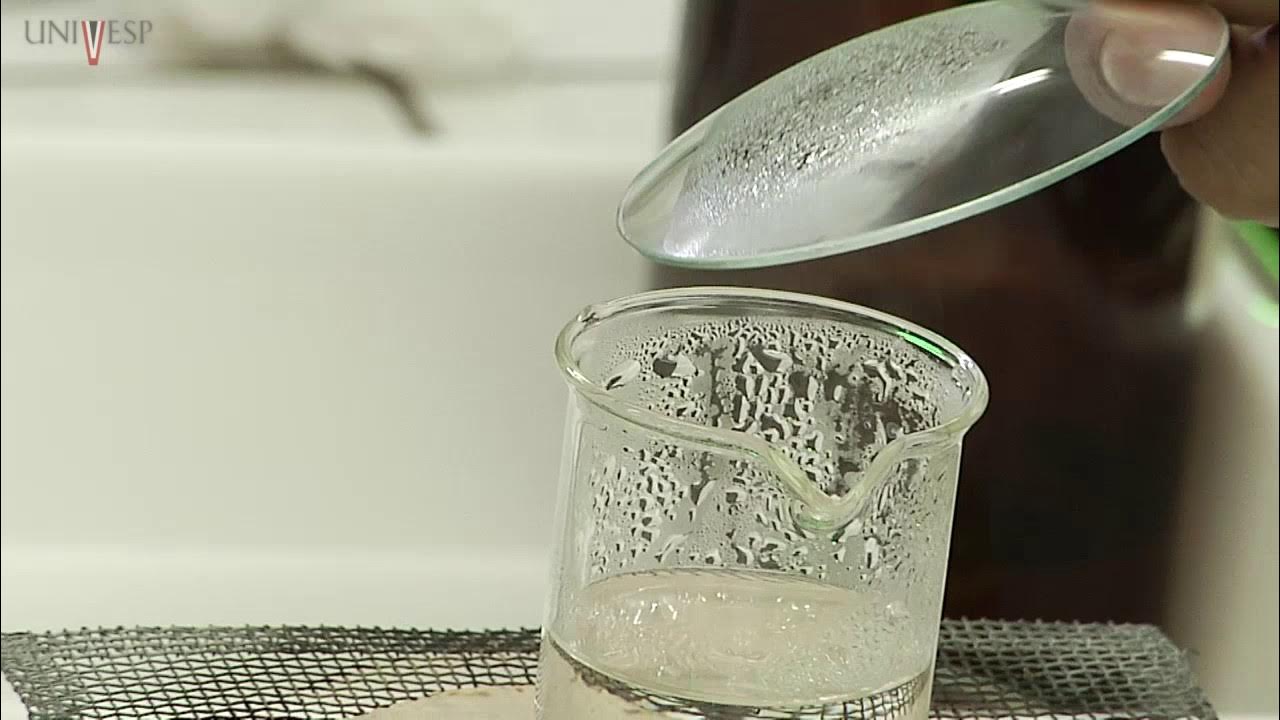Miscugli eterogenei e miscugli omogenei
Summary
TLDRIn this educational video, the instructor guides students through a simple home experiment to explore mixtures and solutions. The experiment demonstrates the difference between homogeneous and heterogeneous mixtures by combining different substances with water. Talcum powder and salt are mixed into separate glasses of water, showcasing how salt dissolves completely (homogeneous mixture), while talcum powder remains distinct and forms a cloudy, non-uniform mixture (heterogeneous). Other examples, like coffee powder and alcohol, further illustrate these concepts. The video emphasizes the characteristics of mixtures and solutions, and how they differ based on the substances involved.
Takeaways
- 🔬 The teacher introduces the lesson on mixtures and solutions, explaining that even though it's remote learning, experiments can be done with household items.
- 🥄 A mixture forms when two substances are combined without undergoing a chemical reaction.
- ⚖️ There are two types of mixtures: homogeneous and heterogeneous.
- 💧 The teacher demonstrates with water, talcum powder, and salt to showcase the differences between these two types of mixtures.
- 🧂 In the first experiment, salt dissolves in water, forming a homogeneous mixture where the salt is no longer visible.
- 🌫️ Talcum powder, on the other hand, forms a heterogeneous mixture with water as it doesn't dissolve and is visibly distinct in the liquid.
- ☕ The teacher uses coffee powder in another experiment, which, like talcum powder, forms a heterogeneous mixture as it remains visible and doesn't dissolve.
- 🔍 Homogeneous mixtures have uniform characteristics throughout, like saltwater, while heterogeneous mixtures allow the components to be visually separated.
- 🍷 Alcohol mixed with water forms a homogeneous mixture, similar to how alcoholic beverages like wine contain both water and alcohol uniformly.
- 🌡️ The key distinction between homogeneous and heterogeneous mixtures is whether the components dissolve and are evenly distributed or remain separate and identifiable.
Q & A
What is a mixture according to the experiment?
-A mixture forms when two substances are combined without undergoing any chemical reaction. There are two types of mixtures: homogeneous and heterogeneous.
What are homogeneous mixtures?
-Homogeneous mixtures are uniform throughout. In the experiment, the water and salt mixture is an example of a homogeneous mixture because the salt dissolves completely, and you can't distinguish it from the water.
What are heterogeneous mixtures?
-Heterogeneous mixtures are non-uniform, meaning the different substances can be distinguished easily. For example, the talcum powder and water mixture in the experiment remains non-uniform, with talcum settling at the bottom, making it easy to identify the solid.
What happens to salt when mixed with water?
-The salt dissolves completely in the water, forming a homogeneous mixture where the salt is no longer visible, but it can be recovered by evaporating the water.
Why is talcum powder and water a heterogeneous mixture?
-The talcum powder does not dissolve in water. It accumulates at the bottom of the glass, and the mixture appears cloudy or opaque, making it easy to distinguish the powder from the water.
Why does light pass through the water and salt mixture but not through the talcum powder mixture?
-The water and salt mixture is homogeneous and transparent, allowing light to pass through easily. In contrast, the talcum powder and water mixture is opaque, as the talcum particles scatter the light and prevent it from passing through.
What other example of a heterogeneous mixture is provided in the experiment?
-Another example is the mixture of water and coffee grounds. Like the talcum powder, the coffee grounds do not dissolve in water, making the mixture cloudy and heterogeneous.
How can you classify a homogeneous mixture when one substance dissolves into another?
-A homogeneous mixture occurs when a substance dissolves completely in another, forming a uniform solution, such as salt dissolving in water.
Can a liquid dissolve into another liquid to form a homogeneous mixture?
-Yes, liquids can dissolve into each other to form a homogeneous mixture. An example from the experiment is water mixed with alcohol, which forms a clear, uniform solution.
What is an example of a real-world homogeneous mixture involving liquids?
-An example is alcoholic beverages like wine, where alcohol and water form a homogeneous mixture. The alcohol content in wine ranges from 10% to 15%, and the mixture remains uniform.
Outlines

Dieser Bereich ist nur für Premium-Benutzer verfügbar. Bitte führen Sie ein Upgrade durch, um auf diesen Abschnitt zuzugreifen.
Upgrade durchführenMindmap

Dieser Bereich ist nur für Premium-Benutzer verfügbar. Bitte führen Sie ein Upgrade durch, um auf diesen Abschnitt zuzugreifen.
Upgrade durchführenKeywords

Dieser Bereich ist nur für Premium-Benutzer verfügbar. Bitte führen Sie ein Upgrade durch, um auf diesen Abschnitt zuzugreifen.
Upgrade durchführenHighlights

Dieser Bereich ist nur für Premium-Benutzer verfügbar. Bitte führen Sie ein Upgrade durch, um auf diesen Abschnitt zuzugreifen.
Upgrade durchführenTranscripts

Dieser Bereich ist nur für Premium-Benutzer verfügbar. Bitte führen Sie ein Upgrade durch, um auf diesen Abschnitt zuzugreifen.
Upgrade durchführenWeitere ähnliche Videos ansehen
5.0 / 5 (0 votes)






